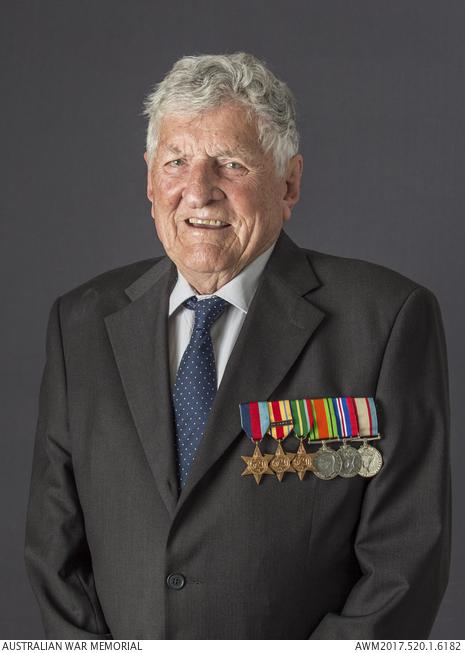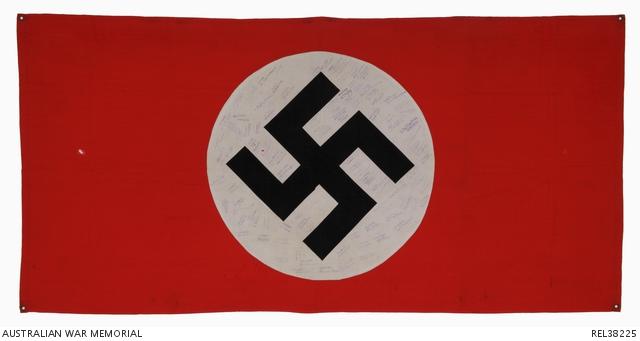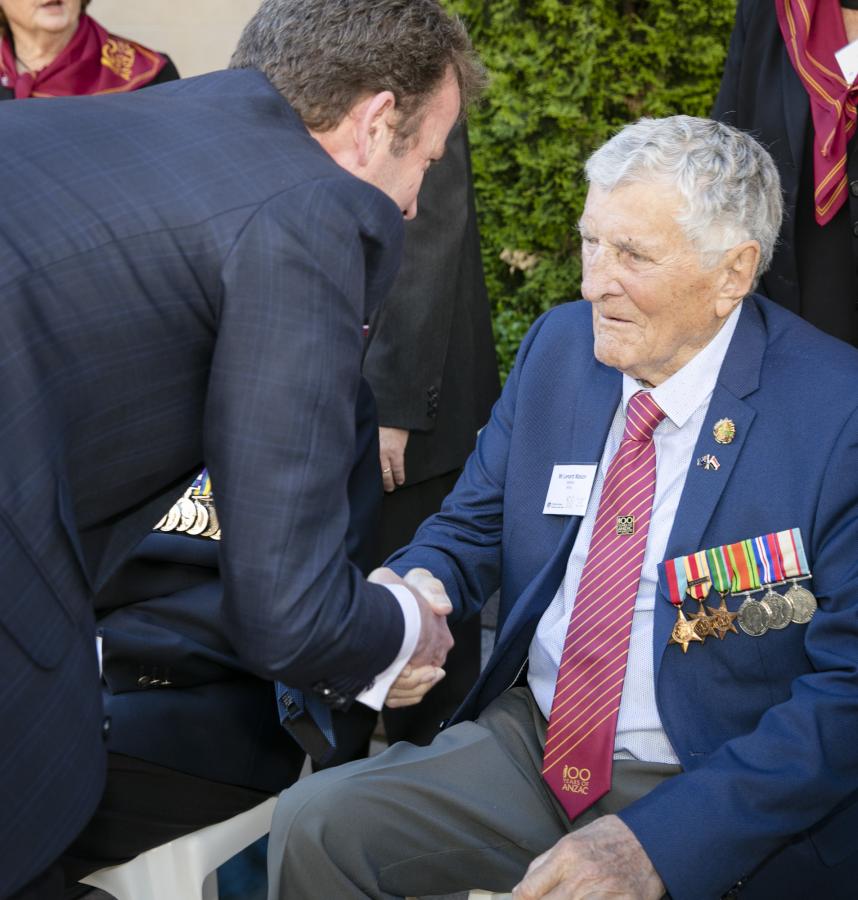'You couldn’t believe you’d survived'

Lenard Mason: "You would just about shake with nerves because the noise was so loud."
Lenard Mason is sitting quietly near the entrance to the Australian War Memorial waiting for the Last Post Ceremony to start. The 97-year-old was just a teenager when he heard the declaration of war and decided to enlist in July 1940. But the memories remain vivid, and he smiles when I ask why he decided to join up all those years ago.
“That’s a jolly good question, mate,” he said with a laugh. “I think that I was working in a factory at the time, and there must have been quite a few of us, and we all got excited about joining the army, you know.
“I was in … a sort of military thing before, but, no, I got quite excited about joining. My dad had been in the army, so it was just one of those things, and I joined.
“Actually, I joined when I was 17, but they deferred it … and I went in on the 29 July 1940. Then on Boxing Day 1940, I was on the Aquitania [heading] towards the Middle East. I was just 18.”
Mason joined the 2/2nd Machine Gun Battalion at Middle East Command in December 1940 and helped protect the 9th Army Headquarters in Lebanon before the battle of El Alamein in 1942.
“It was interesting because it was history,” Mason said. “And, of course, we’ve all heard of Jerusalem. And I wanted to see Jerusalem, which I did, and Tel Aviv and Beirut and all these places. And then we were up in a place called Romana on the Syrian border. We sort of travelled all over the place … but it was sort of like an adventure at the start, and I just enjoyed it, you know. But then of course, when it came up to Alamein, that was a different story.”
Mason will never forget the massive artillery barrage that heralded the beginning of the second battle of El Alamein on the night of 23 October 1942.
“Shocking – unbelievable it was, the firepower and everything,” he said.
“We were told to do things and we did them, regardless of what the functions were, and I don’t regret one bit of it.
“I was a number three on the machine-gun – the Vickers gun – and my role was to put a feed block on the guns. The other one had broken down, and that was it. [They would yell] ‘feed block’ and you would rush back to the Bren gun carrier and put it on, and lie down in the hole again.
“But we were a long time in the desert. It wasn’t just the 23rd of October. We went in on the 10th of July and stopped Rommel getting down the Suez, or down to Cairo and past there, because all he was after was the oil. So we did that, and then of course the big show was on the 23rd of October.
“They had two searchlights roaming the sky and they kept flashing around the sky all over the place. The Germans must have wondered what the heck was going on, you know, and they came together at a point, away in the sky, and 1,100 artillery pieces opened up at 10 o’clock at night...
“It was unreal, the noise. You couldn’t hear yourself speak, I mean, you would just about shake with nerves because the noise was so loud.

The flag Lenard Mason collected at El Alamein features the service numbers and names or signatures of members of the 2/2nd Machine Gun Battalion.
“We were told by General Montgomery what was going to happen [but] the battle was very intense … It was deafening.
“It went on for quite a few days … until the 3rd of November, and we had quite a few casualties, naturally, and that sort of thing, but it’s something I don’t dwell on now.
“You can get emotional when … they start talking [about it]. And then today, two separate women came up to me, and the first one said to me: ‘Oh, were you at Alamein?’ … She shook my hand and thanked me very much. Then, about half an hour later, another one came up to me and asked me the same thing, and I said, ‘Yes,’ and she started to cry…
“It was very, very sad, but it’s just incredible how many other people are here [at the Memorial]. Maybe they lost loved ones or something like that, you know, but it brings back lots of memories, it really does, and what I can’t understand is, how we survived. We lived in the desert [with] no toilets, one water bottle a day in 45 to 50 degree heat, [and] freezing at night in a pair of shorts or whatever. It was quite unreal, you know, the whole thing – like a dream.
“But then on the 3rd of November, we got the message that Rommel had retreated … and that was the best news we’d heard.
“Absolutely marvellous, it was… It stopped the Germans getting control of the oil fields, so it was wonderful.
“At least we did that, so it was good.”
After the battle, Mason found a Nazi flag in an underground bunker abandoned by the retreating Germans.
“I remember the place very clearly; we had to be very careful about booby traps,” he told The Canberra Times in 2013. “There were so many bodies you could hardly walk through them. In amongst utter destruction I saw the flag folded up.”
Mason asked members of his battalion to sign the flag on their way home to Australia on board the troopship Queen Mary, but the flag never made it back to him. The flag ended up in the possession of another member of the company, William Murray, and was later donated to the Australian War Memorial in Canberra.
Mason was finally reunited with the flag more than 70 years after he found it when his wife Judy spotted pictures of it while doing online research for his 90th birthday. “It is a very emotional day for me,” he told The Canberra Times when he saw the flag again. “I am thrilled to see it. It brings back all the memories of my battalion. It is just so fantastic to see my best mate's signature right here under mine.''
Today, the memories remain as vivid as ever, and Mason will never forget how he felt when he finally arrived home before going on to serve in the Pacific.
“Absolutely fantastic,” he said. “We came through Sydney Harbour on the Queen Mary and, absolutely, it was like a dream. You couldn’t sort of cope with it. You just sort of dummy-like did what you were told because you couldn’t believe you survived. You know, I got hit with shrapnel and all that sort of nonsense, but you couldn’t believe you’d survived and you were still okay. What a wonderful feeling to get home, and have three weeks’ leave. It was great.”

Lenard Mason at the Memorial: "What I can’t understand is, how we survived."